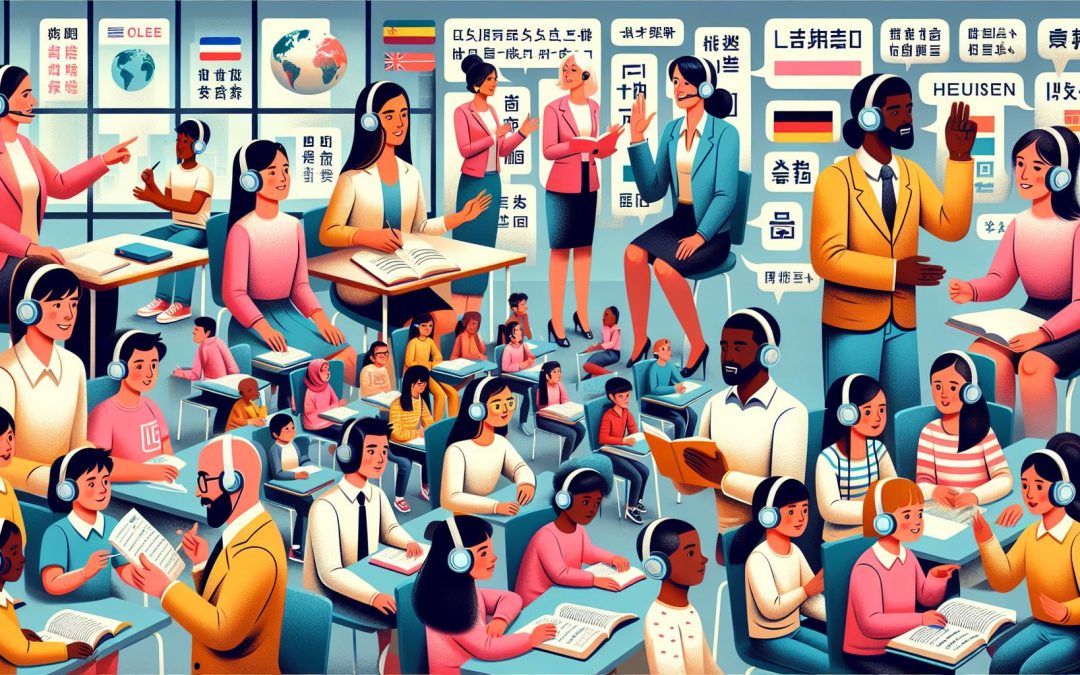Scottsdale, Arizona, isn’t just known for its stunning deserts and vibrant art scene; it’s also becoming a hub for innovative education. One of the most exciting developments? The rise of public schools offering language immersion programs. I’ve always been fascinated by the power of language to connect us, and seeing this unfold in my backyard is truly inspiring.
Navigating the educational landscape can be daunting, especially when you’re looking for something as specific as a language immersion program. But fear not! I’ve done some digging to bring you the scoop on what Scottsdale’s public schools have to offer. Whether you’re a parent considering options for your child or just curious about the concept, you’re in the right place. Let’s dive into the world of language learning in Scottsdale and see what makes these programs so special.
Understanding Language Immersion Programs
When I first dipped my toes into the world of language immersion, I was genuinely curious about what it entailed. It’s not just about learning a new language; it’s about immersing yourself in a cultural and linguistic bath that seeps into your pores in ways traditional learning doesn’t. In Scottsdale, these programs are taking a front seat in the education arena, and I’ve been eager to unravel what makes them tick.
At its core, a language immersion program integrates the foreign language into the daily curriculum. Instead of having a separate class dedicated to learning Spanish, for example, subjects like math, science, and social studies are taught in Spanish. This approach ensures that students are not just memorizing vocabulary but are actively using the language to think, communicate, and learn. It’s fascinating to see how quickly children adapt to this method, becoming fluent speakers as they navigate their educational journey.
The beauty of Scottsdale’s approach lies in its diversity. Programs here aren’t limited to just one language. From Spanish to Mandarin, opportunities abound for students keen on embracing a new linguistic challenge. This diversity reflects the community’s understanding of our interconnected world and the need for cultural competence alongside linguistic skills.
What truly inspires me is the level of commitment from both educators and parents in Scottsdale. It’s a partnership that nurtures not just academic excellence but a genuine love for languages. Their support creates an environment where students feel safe to explore, make mistakes, and grow. Watching a kindergartener switch languages as they explain a science concept or share a story is nothing short of magical. It’s a testament to the effectiveness of immersion programs and the bright future they promise for our young learners.
As these programs evolve, I’m excited to see how they’ll further shape education in Scottsdale. The potential for creating worldly, intellectually curious individuals is immense, and it’s a journey I’m thrilled to be a part of, even if just as an observer.
Benefits of Language Immersion Education

When I first dove into the world of language immersion education, it wasn’t long before I unearthed a treasure trove of benefits that go beyond just acquiring a new language. My journey through this educational path in Scottsdale, Arizona, shed light on how such programs enrich students’ lives in multifaceted ways.
First and foremost, students in these programs often develop enhanced cognitive skills. This isn’t just anecdotal; research supports the idea that kids who learn a second language can multitask better and show signs of improved problem-solving abilities. It’s like their brains are being trained to operate on a higher level, switching between languages and, by extension, perspectives, with ease.
Another standout advantage is the cultural understanding that students gain. As they learn a new language, they’re also diving into the cultural nuances that accompany it. This doesn’t just make them more informed global citizens; it fosters a deep sense of empathy and understanding towards people from different backgrounds. In today’s interconnected world, such skills are invaluable.
Moreover, let’s talk about academic performance. Students in language immersion programs in Scottsdale aren’t just becoming fluent in another language; they’re also seeing improvements in their overall academic achievement. The immersive experience seems to ignite a passion for learning across subjects, possibly due to the dynamic and engaging nature of learning in a foreign language.
Lastly, the career advantages cannot be overstated. Fluency in a second language opens doors in the global job market that would otherwise remain closed. As the world becomes more interconnected, employers increasingly seek individuals who can navigate different cultures and languages with ease.
Diving into a language immersion program has undeniable benefits that extend far beyond the classroom walls. It’s about cultivating a well-rounded, globally minded individual ready to take on the world’s challenges.
Public Schools in Scottsdale Offering Language Immersion
When I set out to explore the options for language immersion programs within public schools in Scottsdale, I was pleasantly surprised by the variety and quality available. These programs are not only accessible but are designed to foster an environment where students can thrive both academically and personally. Understanding the importance of early language acquisition, Scottsdale’s public schools have created opportunities for students to immerse themselves in languages other than English, right from a young age.
One of the standout schools is Pueblo Elementary School, which offers a Spanish Immersion program. This isn’t just about learning Spanish – it’s about experiencing the language through the lens of cultural understanding and academic excellence. Students from kindergarten through fifth grade are given the opportunity to become fluent speakers while also gaining a deep appreciation for Spanish-speaking cultures.
Likewise, Cheyenne Traditional School is another excellent example where students have the chance to engage in a language immersion program. Their approach is slightly different, emphasizing a curriculum that caters to students who are keen on learning languages such as Mandarin. The emphasis is not solely on language proficiency but also on enabling students to become culturally competent and respectful global citizens.
For those interested in French, Cochise Elementary School offers a program that’s as rigorous as it is rewarding. Starting from a young age, students are immersed in French language and culture, setting them up for a lifetime of opportunities—both personal and professional.
| School Name | Language Offered |
|---|---|
| Pueblo Elementary School | Spanish |
| Cheyenne Traditional School | Mandarin |
| Cochise Elementary School | French |
What stands out about these programs is their commitment to creating a comprehensive learning experience that goes beyond just language learning. It’s about embedding students in the culture, traditions, and nuances of the language, thereby preparing them for a globalized world.
How to Enroll in a Language Immersion Program
When I first looked into enrolling my child in a language immersion program in one of the public schools in Scottsdale, Arizona, I’ll admit it seemed a bit daunting. But, breaking it down into steps made the process much clearer and manageable for me. Here’s how you can do the same.
Step One: Research is crucial. Each school has its own unique immersion program, focusing on a different language and culture. For example, Pueblo Elementary offers Spanish, Cheyenne Traditional goes for Mandarin, and Cochise Elementary dives into French. I made a list of what each school offers, their curriculum highlights, and how they integrate cultural learning into their programs. This helped me understand which program would best suit my child’s interests and our family’s goals for language learning.
Step Two: Check Eligibility. Most of the schools have specific enrollment periods and eligibility criteria. I found that it’s best to visit the school’s website or contact the enrollment office directly to get the most current information. Some schools may also require previous language experience, while others welcome beginners with open arms.
Step Three: Application Process. Once I’d chosen the right program, the next step was to fill out the application. This usually required basic information about my child, proof of residence in Scottsdale, and sometimes a statement about why we were interested in that specific language immersion program. It’s worth noting that some schools might have a waiting list, so it’s better to apply early.
Lastly, Step Four: Stay Engaged. After submitting the application, I made sure to stay proactive. This meant attending any open houses, meeting with teachers or the program director, and joining parent groups associated with the program. This not only kept me informed but also helped us become a part of the school’s community even before classes began.
Conclusion
Embarking on the journey of enrolling your child in a language immersion program in Scottsdale’s public schools is a step toward enriching their educational experience. I’ve walked you through the essentials, from researching the best fit to diving into the application process. It’s all about making informed decisions and staying involved. Remember, your active participation is key to unlocking your child’s potential in mastering a new language. Here’s to opening doors to new cultures and opportunities for them. Let’s embrace this adventure together!







